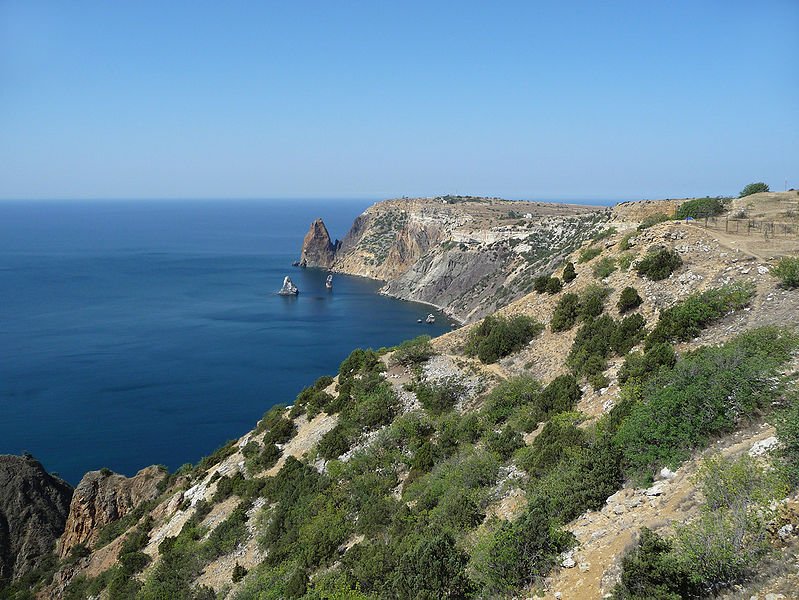 Fiolent Rock Formation, Sevastopol, Crimean Peninsula, Ukraine, with view of the Black Sea
Fiolent Rock Formation, Sevastopol, Crimean Peninsula, Ukraine, with view of the Black SeaSource: https://commons.wikimedia.org/wiki/File:Fiolent_Sevastopol_2009_G1.jpg
Author: George Chernilevsky

Sevastopol (Ukrainian/Russian: Севастополь is a major port city on the southern tip of the Crimean peninsula in Ukraine. Covering 864 sq km (333.6 sq mi), it has a population of 379,000 people (2011 estimate). The city is the second largest port in Ukraine after Odessa.
In addition to being a major port, Sevastopol is today a popular seaside resort and tourist destination, with most of the visitors coming from the Commonwealth of Independent States (CIS). It is also the home of the Ukrainian naval base, a trading hub and a center for shipbuilding and marine biology research.
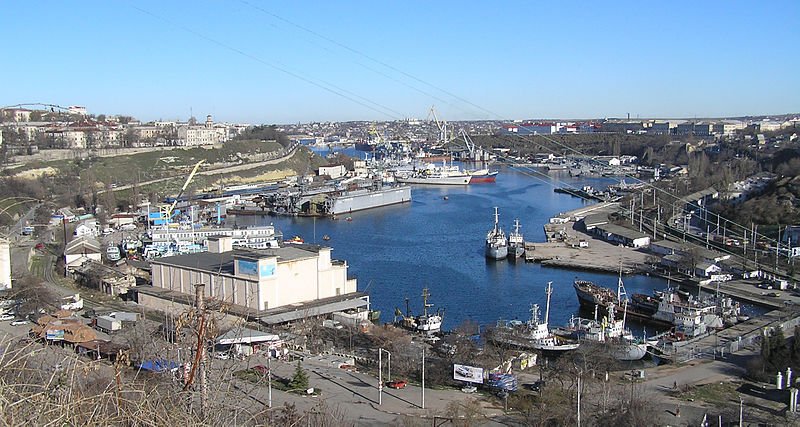 South Bay, Sevastopol
South Bay, SevastopolSource: https://commons.wikimedia.org/wiki/File:Sebastopol_South_Bay.jpg
Author: Pavlo1

Sevastopol enjoys a humid subtropical climate bordering on the humid continental climate and semi-arid climate. Its warmest month is July, when the average high temperature rises to 26.5°C (79.7°F). Coldest month is February, when the average low temperature drops to -0.4°C (31.3°F). December is the wettest month with 52 mm (2.05 in) of precipitation. The annual precipitation amounts to 379 mm (14.9 in).
Due to its strategic location, Sevastopol has been an important naval base since its founding, by Russian Rear Admiral Makenzie in 1783, when Russia annexed the Crimean peninsula. Before Sevastopol was established, the area was known as Akhtiar. Its present name was derived from the fortress built by Catherine the Great in 1784.
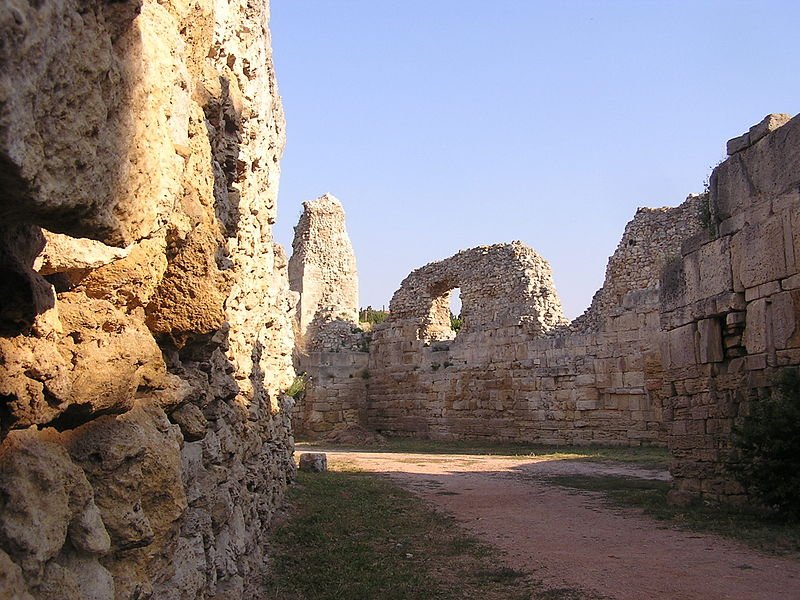 Ancient Greek ruins of Chersonesus Taurica, Sevastopol
Ancient Greek ruins of Chersonesus Taurica, SevastopolSource: https://commons.wikimedia.org/wiki/File:%D0%9F%D0%B5%D1%80%D0%B8%D0%B1%D0%BE%D0%BB_1.jpg
Author: Andrew Butko

During the Crimean War, the joint forces of the British, French, Sardinian and Turkish troops held siege of Sevastopol for eleven months. The city also suffered severe bombardment by the Germans during the Second World War. It eventually fell to the Nazis in July 1942, and was occupied until May 1944.
Being a sensitive military area, Sevastopol was a closed city during the Soviet era. Non-residents have to apply for a temperary permit in order to visit it. After the fall of the Soviet Union, Sevastopol became part of an independent Ukraine, resulting in a territorial dispute with Russia. Most of the people in Sevastopol speak Russian rather than Ukrainian, and attempts to "Ukrainize" the city has met with limited success.
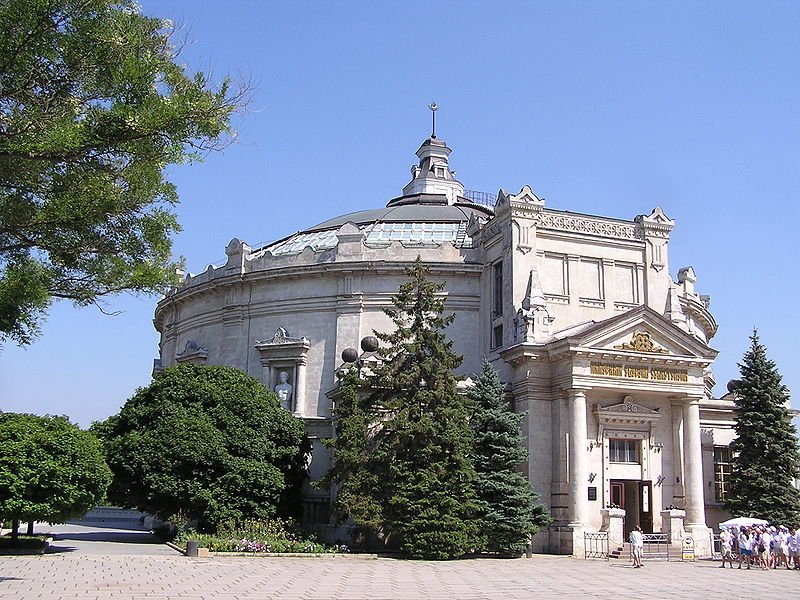 Panorama Museum of the Heroic Defence and Liberation of Sevastopol
Panorama Museum of the Heroic Defence and Liberation of SevastopolSource: https://commons.wikimedia.org/wiki/File:%D0%9F%D0%B0%D0%BD%D0%BE%D1%80%D0%B0%D0%
BC%D0%B0_%D0%BE%D0%B1%D0%BE%D1%80%D0%BE%D0%BD%D1%8B_%D0%A1%D0%B5%D0%B2%D0%B0%D1%81%D1%8
2%D0%BE%D0%BF%D0%BE%D0%BB%D1%8F_1.jpg
Author: Andrew Butko

Visiting Sevastopol
The Sevastopol International Airport receives flights from Kiev, Dnipropetrovsk and Moscow. There are also train services from Dnipropetrovsk (9 hours), Kiev (16 hours), Moscow (24 hours) and Saint Petersburg (35 hours).Exploring Sevastopol
While the Old Town can be explored on foot, for greater distances you may need to take a minibus (marshrutka) or regular bus. As little is printed in English, you may need to seek help from the locals. The public transport tends to be cheap but crowded.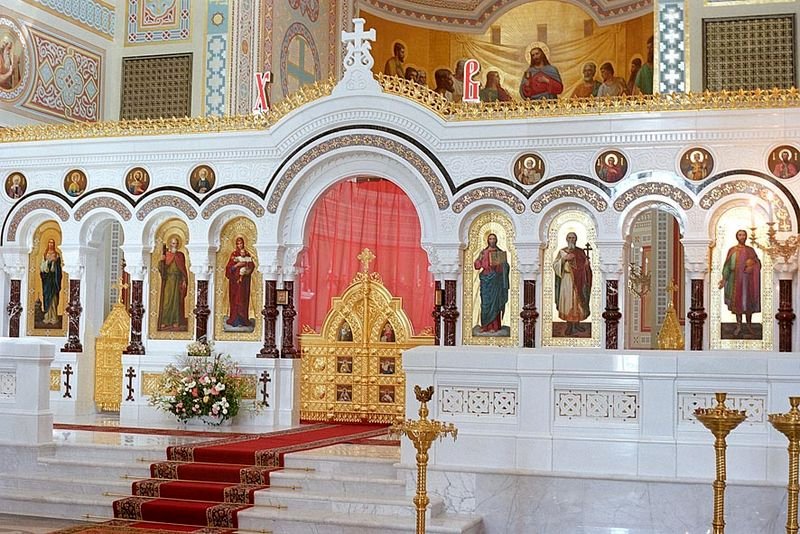 Interior of St Vododymyr's Cathedral, Sevastopol
Interior of St Vododymyr's Cathedral, SevastopolSource: https://commons.wikimedia.org/wiki/File:Sevsobor3.jpg
Author: Andreev720

Sights & Attractions in Sevastopol
- Black Sea Fleet Museum
Museum of the Soviet and now Ukrainian Navy. - Chersonesus Taurica
Ruins of an ancient Greek colony on the outskirts of Sevastopol. - Panorama Museum
Museum explaining the heroic defence of Sevastopol during the Crimean War.
 Latest updates on Penang Travel Tips
Latest updates on Penang Travel Tips
 Map of Roads in Penang
Map of Roads in Penang
Looking for information on Penang? Use this Map of Roads in Penang to zoom in on information about Penang, brought to you road by road.
Copyright © 2003-2025 Timothy Tye. All Rights Reserved.

 Go Back
Go Back